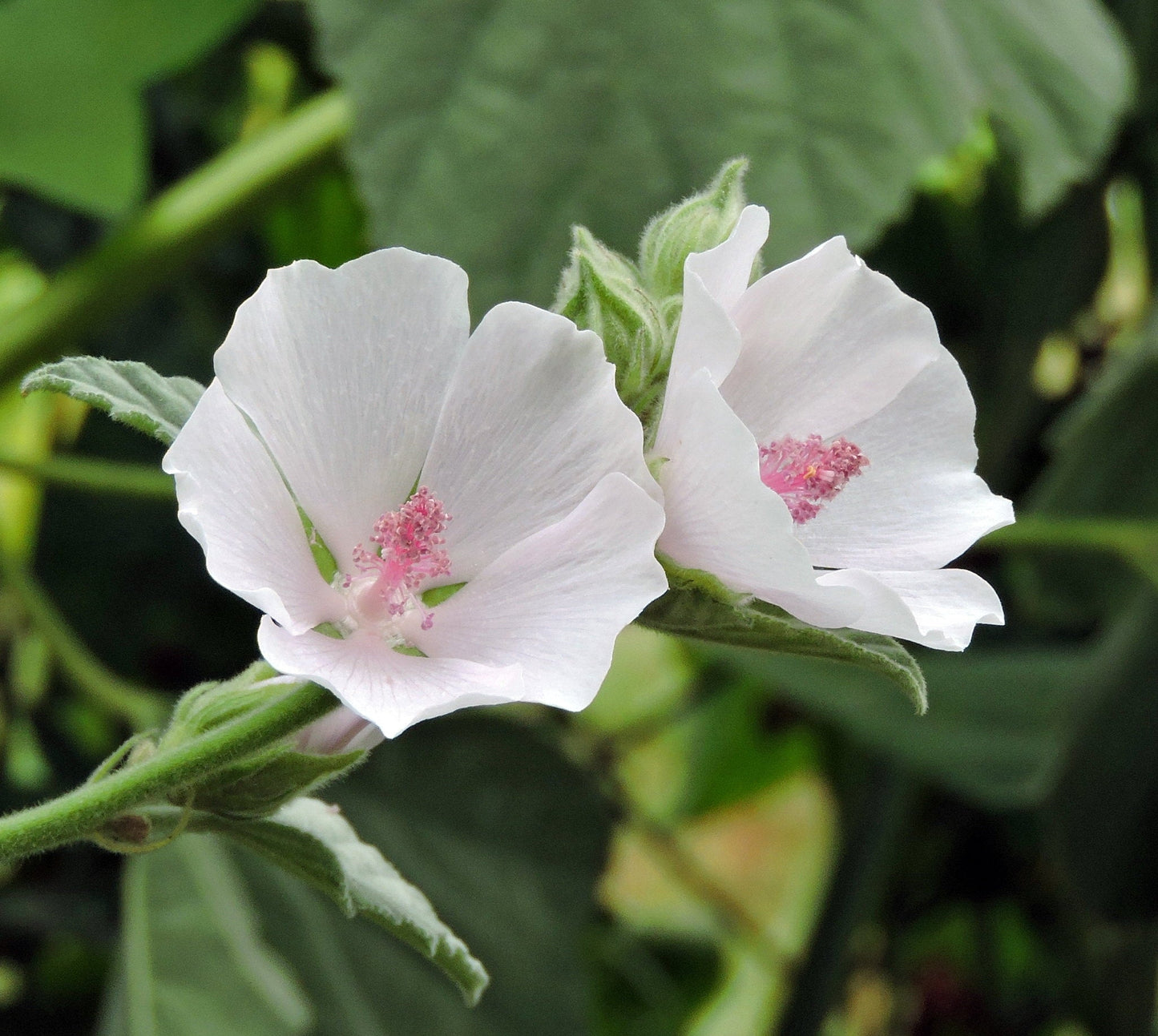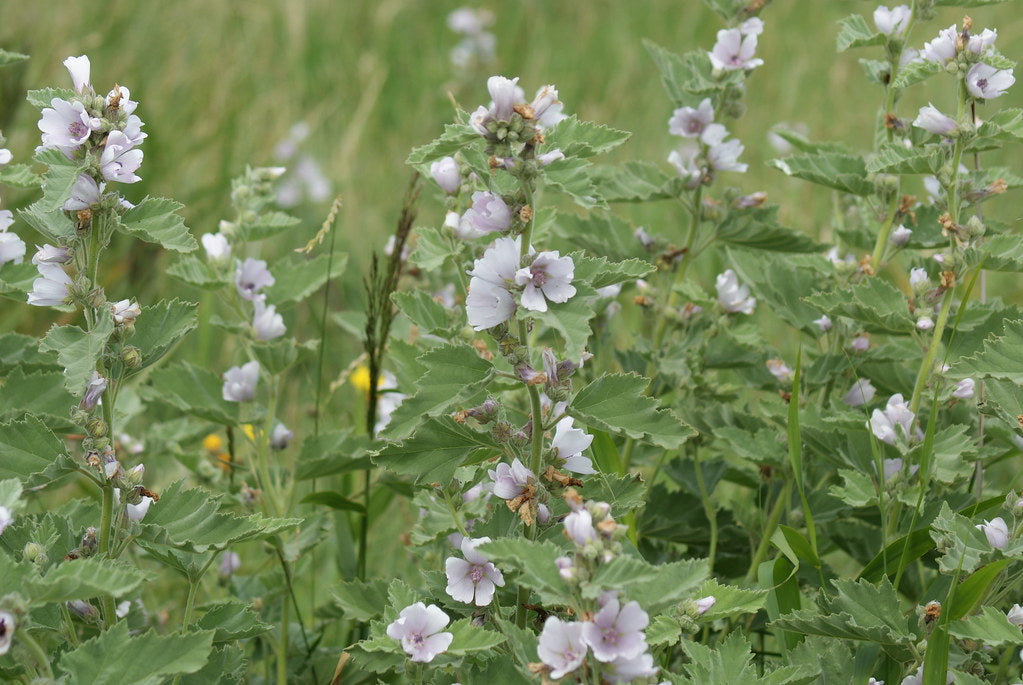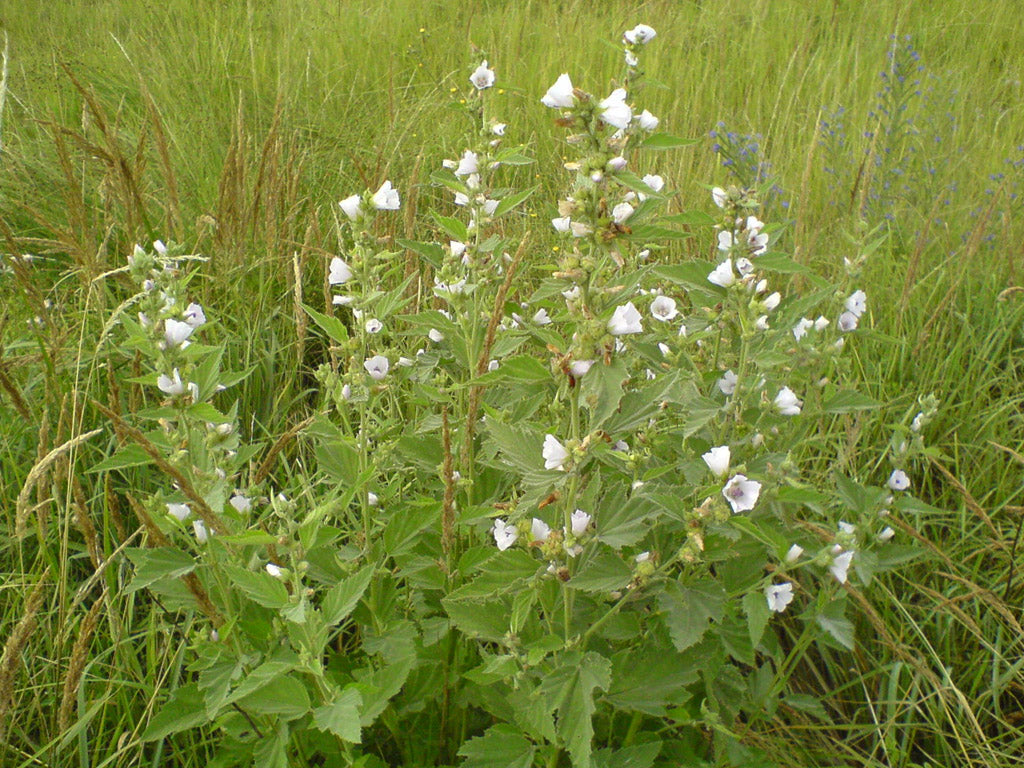Floridaseeds
Marshmallow Althaea officinalis 4000 Seeds USA Company
Marshmallow Althaea officinalis 4000 Seeds USA Company
Couldn't load pickup availability
Althaea officinalis, commonly known as marshmallow, is a perennial herbaceous plant native to Europe and Western Asia. It is part of the Malvaceae family and has a long history of traditional use for various medicinal and culinary purposes. Here are some key characteristics and information about Althaea officinalis:
Key Characteristics of Althaea officinalis:
Growth Habit: Marshmallow is a herbaceous perennial plant that can reach heights of 3 to 4 feet (about 1 to 1.2 meters). It has a straight, unbranched stem and a deep taproot.
Leaves: The leaves of marshmallow are soft, velvety, and grayish-green in color. They are heart-shaped or palmately lobed, with toothed margins. The leaves are alternate and may have a rough texture due to tiny hairs.
Flowers: Marshmallow produces showy, pale pink to lavender-colored flowers. The flowers are typically 1 to 2 inches (2.5 to 5 cm) in diameter and have five petals. They are arranged in axillary clusters and have a mild, sweet fragrance. Flowering usually occurs in late summer.
Root: The root of the marshmallow plant is the most well-known part for its medicinal and culinary uses. It contains mucilage, a gel-like substance, which has soothing and demulcent properties.
Cultural and Historical Significance: Marshmallow has a long history of traditional use dating back to ancient civilizations, including the Egyptians, Greeks, and Romans. The plant was used for various medicinal purposes, such as treating respiratory conditions, soothing irritated skin, and providing relief from digestive discomfort. In addition to its medicinal uses, marshmallow was traditionally used to make confections.
Medicinal Uses: The mucilage in marshmallow root makes it useful for soothing coughs, sore throats, and digestive issues. It has been used in herbal remedies for centuries and is often consumed in the form of teas, tinctures, or capsules. The leaves and flowers are also sometimes used for their potential mild expectorant and anti-inflammatory properties.
Culinary Uses: In the past, marshmallow sap (extracted from the root) was used to make a sweet, confectionery treat that shares the same name as the plant. Modern marshmallows, however, are typically made from sugar, gelatin, and flavorings.
Habitat: Marshmallow plants thrive in damp, marshy, or wetland areas, as the name suggests. They prefer moist, well-drained soils and are often found near water bodies.
Propagation: Marshmallow can be propagated from seeds or by dividing established plants. It can self-seed and spread if grown in suitable conditions.
Garden and Landscape Use: While marshmallow is grown primarily for its medicinal and herbal uses, it can also be cultivated as an ornamental plant in gardens due to its attractive foliage and delicate flowers.
Growing Instructions
Stratification (Optional): Some gardeners choose to subject the seeds to a cold stratification period to improve germination. To stratify, place the seeds in a damp paper towel or sand and store them in the refrigerator for about two weeks. This mimics the natural winter conditions that the seeds would experience.
Growing Medium: Use a well-draining, loamy soil mix that is rich in organic matter. Marshmallow plants prefer soil that retains moisture but drains well.
Containers: Choose seedling pots or trays with good drainage holes. The size of the containers should allow for the initial growth of the seedlings.
Warm Environment: Marshmallow seeds germinate best in a warm environment with temperatures around 70-80°F (21-27°C). You can use a heat mat to maintain the desired temperature.
Steps to Grow Marshmallow from Seeds:
Sowing: Fill your seedling pots or trays with the prepared potting mix. Plant the marshmallow seeds about 1/4 to 1/2 inch (6-12 mm) deep in the mix. Space them a few inches apart.
Watering: Keep the potting mix consistently moist but not waterlogged. A spray bottle can be useful for misting the surface to maintain humidity. Water the pots from below to avoid disturbing the seeds.
Covering: Place a clear plastic lid or plastic wrap over the pots or trays to create a mini greenhouse effect, which helps maintain high humidity around the seeds. Keep the lids on until germination.
Germination: Germination can take time, possibly several weeks, so be patient. Once you see the seedlings emerging, gradually remove the cover to acclimate them to lower humidity.
Transplanting: When the seedlings have grown large enough and have developed several sets of true leaves, they can be transplanted into larger pots or directly into the garden if the climate is suitable. Be gentle when handling the young plants.
Growing Conditions: Provide your marshmallow seedlings with bright, indirect sunlight as they continue to grow. As they mature, they can handle more direct sunlight.
Caring for Seedlings: Ensure that the soil remains consistently moist but not waterlogged. Marshmallow plants appreciate regular watering, especially during dry periods. Consider providing a layer of organic mulch to help retain soil moisture.
Hardening Off: Before planting your marshmallow seedlings outdoors, it's essential to harden them off by gradually acclimating them to outdoor conditions. This process typically takes about a week.
Marshmallow plants are known for their attractive foliage, delicate flowers, and potential medicinal uses. Once established, they are relatively low-maintenance and can add beauty and potential herbal benefits to your garden or landscape.
Materials
Materials
Shipping & Returns
Shipping & Returns
Dimensions
Dimensions
Care Instructions
Care Instructions
Share










